Your pet’s eye health is key to ensuring they maintain good vision and comfort. Eye diseases commonly cause pain or discomfort, as most people who’ve had pinkeye or a rogue eyelash can understand. Many pet owners who notice their pet squinting or tearing assume the problem is minor and transient, but your pet could have a serious, underlying issue. Check in with the Stack Veterinary Hospital team if you notice signs of these common eye diseases in your pet.
#1: Conjunctivitis in pets
Conjunctivitis, commonly known as “pink eye” in humans, is a frequent cause of redness, swelling of the pink tissue lining the eyelids, and eye discharge or watering in pets. In dogs, the most frequent causes are allergies and irritants. Some young, large-breed dogs develop persistent conjunctivitis because their immune system overreacts to airborne substances, but they typically grow out of this by 2 to 3 years of age.
Conjunctivitis in cats is usually caused by an upper respiratory infection, most commonly herpesvirus. The feline herpesvirus is widespread, and most cats have been exposed, but some go on to harbor the virus deep in their nerve cells. The virus reactivates during stressful times or illness, causing conjunctivitis and sometimes an eye ulcer or abrasion. Treatment for conjunctivitis in dogs and cats can include anti-inflammatory eyedrops and antiviral drops.
#2: Dry eye disease in dogs
Dry eye disease (i.e., keratoconjunctivitis [KCS]) is common in certain dog breeds, particularly small terriers and bulldogs, but can occur in any dog or breed. Dogs with diabetes or other endocrine disorders are also at higher risk, while cats are at little to no risk of disease development. Dogs with dry eye develop red, irritated, dull-looking eyes with a persistent, thick, yellow-green discharge, because they do not produce enough watery tears. Untreated dry eye can cause corneal ulcers, pigmentation, and scarring that lead to vision loss or, in the worst cases, eye loss. Treatment includes life-long tear stimulant eye drops or ointment, or occasionally a specialized surgery.
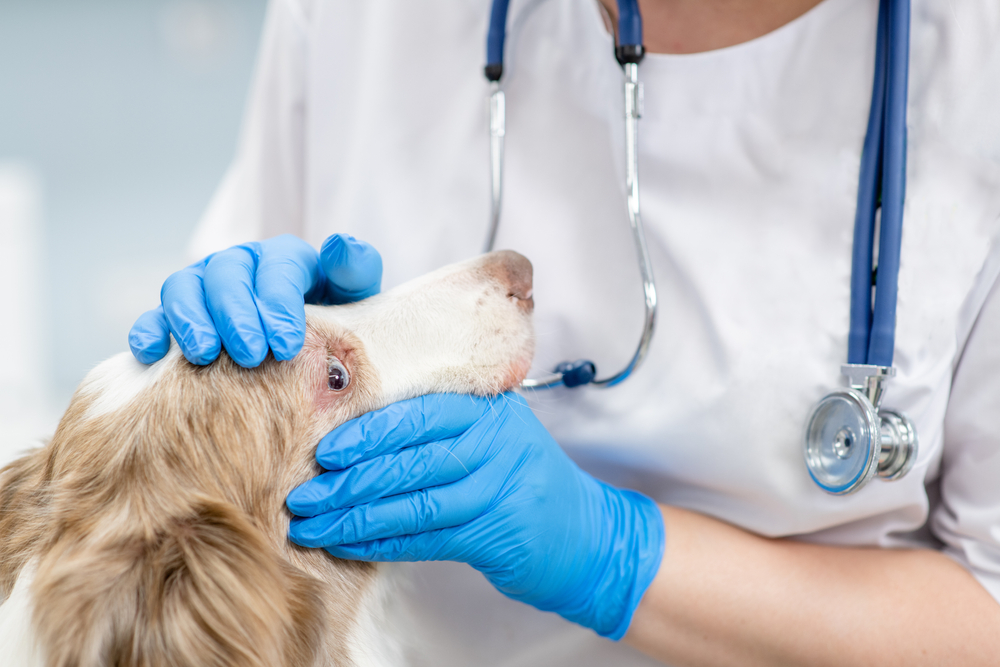
#3: Eyelid and eyelash disorders in pets
Eyelid and lash disorders frequently cause recurrent conjunctivitis, irritation, and corneal ulcers in dogs and cats, and usually require surgical correction. Common eyelid disorders include:
- Entropion — Eyelids roll inward and the eyelashes rub on the cornea.
- Ectropion—Eyelids roll outward, exposing the conjunctiva to irritants.
- Cherry eye—The third eyelid gland at the inner eye corner pops out of place and looks like a red bump or mass.
- Eyelid tumors—These small growths, seen commonly in older dogs, can be rubbed on and irritate the cornea as they grow larger.
- Distichia—These extra eyelashes may or may not rub on the cornea.
- Trichiasis—This facial hair grows in the direction of the eyes.
- Ectopic cilia—These abnormally placed eyelash-like hairs grow on the underside of the eyelid and poke directly onto the eye.
#4: Cataracts in pets
Cloudiness in the lens of a pet’s eye, located behind the iris and pupil, can be caused by normal aging changes (i.e., lenticular or nuclear sclerosis) or a cataract. Cataracts often appear in middle- or older-age pets and progress slowly, leading to occasional complications, such as inflammation, and eventual vision loss. Young pets, often purebreds, may develop a juvenile cataract that can eventually cause the lens to resorb or dissolve. Cataracts are also extremely common in diabetic dogs, causing eventual blindness in nearly all cases. The only cataract treatment is surgery performed by a veterinary ophthalmologist. Pets who do not have surgery need anti-inflammatory eye drops to prevent inflammation inside the eye caused by the cataract-leaking proteins into surrounding structures.
#5: Glaucoma in pets
Glaucoma occurs in two forms—primary and secondary. Primary glaucoma develops in pets with a genetic predisposition that is often related to breed. Siberian huskies, Basset hounds, beagles, and shih tzus are some of the most commonly affected breeds. Secondary glaucoma occurs when another eye problem, such as inflammation (i.e., uveitis) or a loose lens, interrupts normal eye fluid drainage. Both glaucoma types cause increased pressure inside the eye, which damages nerves and structures and causes pain and blindness.
Glaucoma often starts in only one eye, causing redness, pain (i.e., squinting), and a cloudy or blue-colored eye surface. Eye drops may reduce pressure and ease the pain temporarily, but many dogs need specialized vision-saving intra-ocular surgery, or they ultimately lose vision and need eye removal surgery to be comfortable.
This list of common pet eye diseases is far from inclusive—many other disorders, injuries, infections, or systemic diseases can affect or worsen the eyes. Because eye problems can develop or worsen quickly, you should contact our Stack Veterinary Hospital team as soon as you notice a change. If your pet’s condition requires specialized ophthalmic care, we will refer you to a local veterinary ophthalmologist for further consultation and treatment.


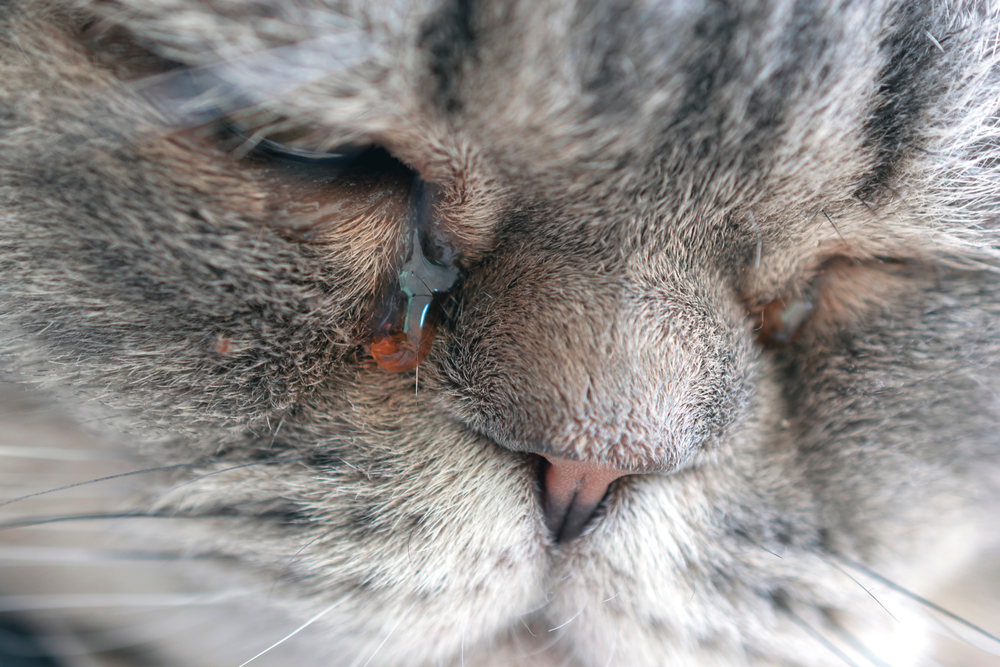
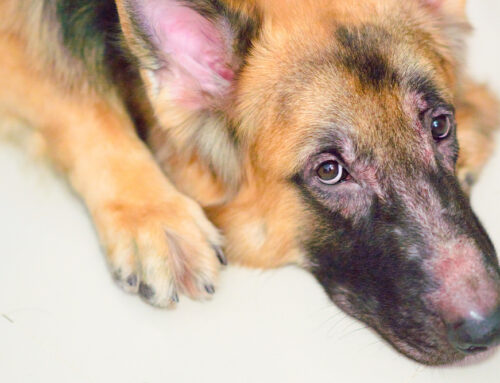
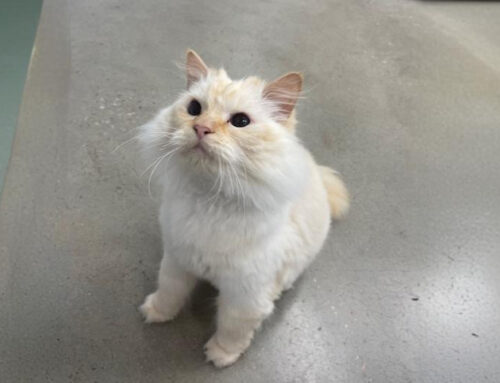
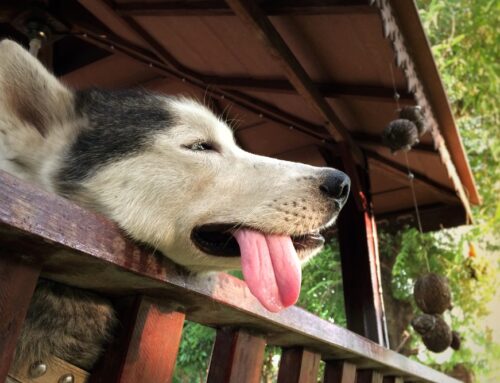

Leave A Comment